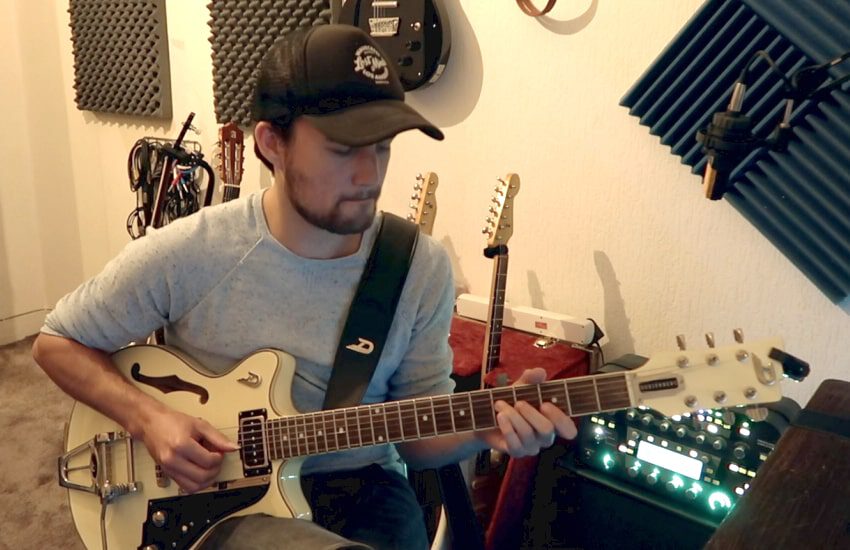And we’re back! This is already the fifth part in the Groove Backpack series. The go-to-series to boost your bassline creativity. A lot of players know their theory but have a hard time really using it in creating basslines. I’m here to help you make a connection between this theory and your playing. In this series I give you some real life bassline examples and explain why they work with the band and inside the harmony. If you want to learn more about my bassline philosophy and want to know which four ingredients are the main building blocks for great basslines, click here.
You can find the other grooves that belong to this series by clicking on “Groove Backpack” in the top menu on this page, or by clicking here. Let’s dive in!
The groove
The harmony: minor IV chord
This little composition exists of two parts, an A-part and a B-part. The A-part revolves around a G7 chord. As I’ve noted before in Groove Backpack 4, you can use the Dorian and Mixolydian modes on the G7 chord. So that’s exactly what I did, Harmony-wise the A-section is not that interesting.
You might wonder, “Dennis, why did you again use a dominant chord for the A section of the song?”. Good question! In most funk and blues music, like these examples, the dominant chord is used all the time. Building up vocabulary for the dominant chord is therefor an essential tool which will come in handy for every bass player.
The B-part to this song is harmonically a bit more interesting. It consists of a G chord, moving to a C minor chord. If you know about chords and how they relate to each other, you would probably expect a C major chord here. Changing the IV chord into a minor chord however, adds certain melancholy which is (in my opinion) very interesting. If you want to read more about the Minor Fourth Chord you can read this cool blog article on songtive.com.
Like I have a habit of doing, the B-section ends with a unison lick. The notes in this lick are all derived from the G Mixolydian mode.
Why the bassline works
The bassline in the A-section was written to support the guitar groove that my good buddy Eric Brugmans (check out his Instagram) had recorded for me. In some places it copies notes that are in the guitar part. In other places it creates a second layer or fills in some of the empty gaps Eric’s part leaves. These notes add movement to the composition. If we would play exactly the same part it would be kind of boring, adding more layers to your composition can make things more interesting.
The drumtrack I programmed keeps the kick drum on every downbeat to add beefiness and continuity to the groove.
In the B-section I play more on the kick-drum connecting on the first and third downbeat of every bar. Again I add little parts to create movement in the music like the ascending bassline in bar 13.
Download and more grooves
If you want to download the whole transcription as a pdf, you can click here.
Be sure to check out the rest of the free series via:
https://bassessentials.com/category/free-bass-lessons-online/how-to-write-basslines-groove-backpack/
Subscribe for new grooves
Do you enjoy Groove Backpack? You can subscribe using the form below to get notifications as soon as new grooves are available.
I hope you found this article helpful! Let me know in the comments what your thoughts are and if you have any questions or suggestions.

